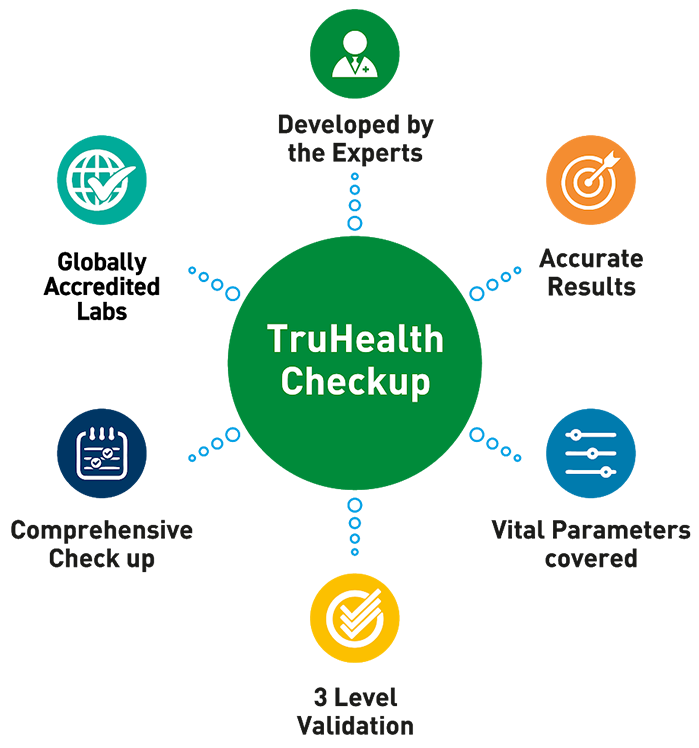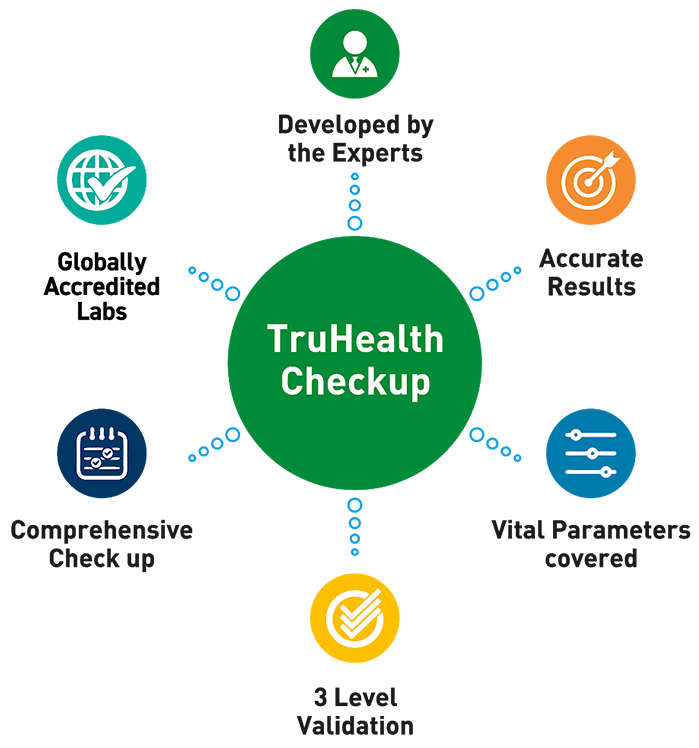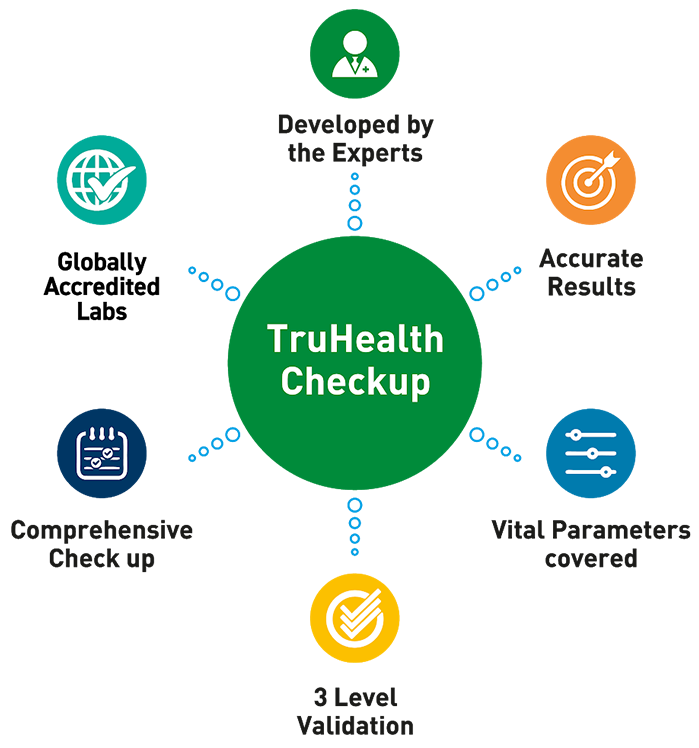Preventive Healthcare
Understanding Tetralogy of Fallot (TOF): Symptoms, Treatment & Causes

Table of Contents
- What is Tetralogy of Fallot?
- What are the Symptoms of Tetralogy of Fallot?
- What are the Complications of Tetralogy of Fallot?
- What Causes Tetralogy of Fallot?
- How is Tetralogy of Fallot Diagnosed?
- How is Tetralogy of Fallot Treated?
- What are the Risk Factors of Tetralogy of Fallot?
- How Can I Reduce my Risk?
- What Can I Expect if I Have Tetralogy of Fallot?
- Conclusion
Tetralogy Of Fallot (TOF) is a rare congenital heart defect. TOF develops when a baby's heart fails to develop normally during pregnancy. It is important for you to know about this condition and understand its causes, potential complications and treatment options. So let's delve deeper into the biology of tetralogy of fallot to get a better understanding.
What is Tetralogy of Fallot?
Tetralogy of Fallot is a congenital (present since birth) heart defect characterised by four anatomical abnormalities in a heart. This condition affects blood flow to lungs and your body.
Four abnormalities of tetralogy of Fallot
Tetralogy of Fallot involves four main heart problems:
- Ventricular Septal Defect: A hole between your heart's lower chambers.
- Pulmonary Stenosis: Narrowing of the valve controlling blood flow to your lungs.
- Overriding Aorta: The aorta, which carries oxygen-rich blood, is shifted toward your right ventricle.
- Right Ventricular Hypertrophy: Thickening of your heart's right lower chamber.
What are the Symptoms of Tetralogy of Fallot?
Some of the common tetralogy of fallot symptoms are:
- Cyanosis (bluish tint to the skin, lips, and nails)
- Shortness of breath, especially during feeding
- Rapid breathing
- Poor weight gain and growth
- Clubbing of fingers and toes due to chronic lack of oxygen
Tet spells
Tet spells are sudden episodes of worsened cyanosis and breathlessness in a tetralogy of fallot baby (2-6 months age). They occur when the narrowing of the pulmonary artery suddenly restricts blood flow to the lungs. These spells can be triggered by crying, feeding, dehydration or waking up from a nap and require immediate medical attention.
Other Tetralogy of Fallot Symptoms and Signs
Some other tetralogy of fallot symptoms include:
- Difficulty feeding or excessive fussiness during feeding
- Heart murmur detected during a physical examination of tetralogy of fallot
- Developmental delays or failure to meet developmental milestones
- Increased risk of infections, particularly respiratory infections, due to reduced oxygen levels in the blood
Tetralogy of Fallot symptoms in Adults
The symptoms of tetralogy of fallot in adults may include:
- Fatigue and breathlessness during physical activity
- Fainting spells (syncope)
- Cyanosis may worsen over time
- Heart palpitations or irregular heartbeats is a common tetralogy of fallot symptom in adults
What are the Complications of Tetralogy of Fallot?
The complications of tetralogy of fallot may include:
- Arrhythmias: Irregular heart rhythms due to structural abnormalities associated with tetralogy of fallot.
- Heart failure: Weakening of your heart muscle over time is a common complication associated with tetralogy of fallot.
- Infective endocarditis: Bacterial infection of your heart's inner lining.
- Delayed growth and development: Due to chronic oxygen deficiency caused by tetralogy of fallot.
- Pulmonary hypertension: Increased blood pressure in your lungs.
- Stroke: Increased risk due to blood clots or arrhythmias.
- Paradoxical embolism: Blood clots traveling from your veins to your arteries through a hole in your heart.
- Neurological complications: Such as developmental delay, seizures, brain abscess etc.
What Causes Tetralogy of Fallot?
The exact tetralogy of fallot causes are often unknown, but several factors may be involved. For instance:
- Genetic factors: Mutations in certain genes can increase the risk of tetralogy of fallot. These genes may include NKX2-5, GATA 4, CITED 2 etc.
- Environmental factors: Exposure to certain environmental toxins, such as chemicals or pollutants, during pregnancy could potentially disrupt normal heart development and increase the risk of tetralogy of fallot. Additionally, maternal infections, particularly during the first trimester, have been linked to a higher incidence of congenital heart defects.
- Maternal factors: Poor maternal nutrition, inadequate prenatal care, maternal diabetes, and substance abuse (including alcohol and drugs) during pregnancy can influence foetal development and increase the risk of tetralogy of fallot.
- Chromosomal abnormalities: Conditions involving chromosomal abnormalities, such as Down syndrome (Trisomy 21), are associated with a higher prevalence of congenital heart defects, including tetralogy of fallot. These chromosomal anomalies disrupt normal foetal development, including cardiac formation.
How is Tetralogy of Fallot Diagnosed?
The diagnosis of tetralogy of fallot is done through a combination of physical examination, imaging tests like echocardiography, blood tests and sometimes genetic testing to determine if certain mutations are associated with tetralogy of fallot.
Tests before birth
- Prenatal screening tests like foetal echocardiography can detect tetralogy of fallot. Foetal echocardiography allows visualisation of the foetal heart to identify structural abnormalities, including tetralogy of fallot.
- Maternal blood tests, such as Maternal Serum Alpha-Fetoprotein (MSAFP), may indicate an increased risk of congenital heart defects, including tetralogy of fallot.
Tests in infancy
- Newborn screening: Routine physical examination after birth may detect signs suggestive of Tetralogy of Fallot.
- Echocardiogram: This specialised ultrasound of the heart confirms tetralogy of fallot diagnosis by visualising structural abnormalities.
- Electrocardiogram (ECG): Detects abnormal heart rhythms or patterns suggestive of tetralogy of fallot.
- Chest X-ray: Helps assess heart size and lung congestion caused by tetralogy of fallot.
- Oxygen saturation monitoring: Measures the level of oxygen in the blood, aiding in assessing the severity of cyanosis.
- Genetic testing: Identifies underlying genetic mutations associated with tetralogy of fallot, especially in syndromic cases.
Tests in Childhood or Adulthood
In addition to the above tests, other tests for tetralogy of fallot for children and adults include
- Exercise stress testing: Evaluates heart function during physical activity with the help of an ECG stress test machine, assessing exercise tolerance and identifying any limitations caused by tetralogy of fallot.
- Cardiac MRI or CT scan: Provides detailed imaging of your heart and blood vessels, aiding in assessment of tetralogy of fallot and planning for potential interventions.
How is Tetralogy of Fallot Treated?
TOF treatment depends on its severity and may involve:
- Surgical repair: Complete repair for tetralogy of fallot typically involves closing the ventricular septal defect, relieving pulmonary stenosis, and repositioning the aorta. This is usually performed in infancy.
- Palliative procedures: Temporary tetralogy of fallot surgery may be needed to improve blood flow to your lungs before complete repair, such as a shunt placement.
- Medications: Drugs may be prescribed to manage symptoms of tetralogy of fallot, prevent complications, or prepare for surgery in TOF treatment. These may include prostaglandins, diuretics, anticoagulants etc.
What are the Risk Factors of Tetralogy of Fallot?
Some of the factors that makes one vulnerable to tetralogy of fallot are:
- Family history( if present in parent or sibling)
- Poor maternal nutrition during pregnancy
- Exposure to toxins or viral infections during pregnancy
- Older maternal age increases the risk of tetralogy of fallot
How Can I Reduce my Risk?
There are several ways by which you can reduce your risk of tetralogy of fallot:
- Keep blood sugar levels under control before and during pregnancy
- Avoid exposure to infections of any kind and fully treat your tetralogy of fallot if you have it.
- Discuss genetic counselling if you have a family history of tetralogy of fallot or other congenital heart defects
- Follow prenatal care guidelines and consult with doctors regularly
What Can I Expect if I Have Tetralogy of Fallot?
If you have Tetralogy of Fallot and have undergone treatment for complete repair of the heart, you can expect to do any daily activity that is done by a normal healthy human with a normal life expectancy, provided you regularly keep an eye on your heart health and manage symptoms associated with tetralogy of fallot. If you leave it untreated, you might face cardiovascular problems throughout your life and it can impact the survival rate.
Conclusion
Tetralogy of fallot is a congenital heart defect that requires lifelong management. Although it presents unique challenges, tetralogy of fallot can be effectively managed with early diagnosis, appropriate medical care, and surgical interventions. If your family has a history of congenital heart defects, consider getting a blood test done to check for tetralogy of fallot in your baby. Metropolis Healthcare is at your service with hassle-free, reliable and comprehensive blood test facilities, both at home and within our advanced labs. Book your test today!





















